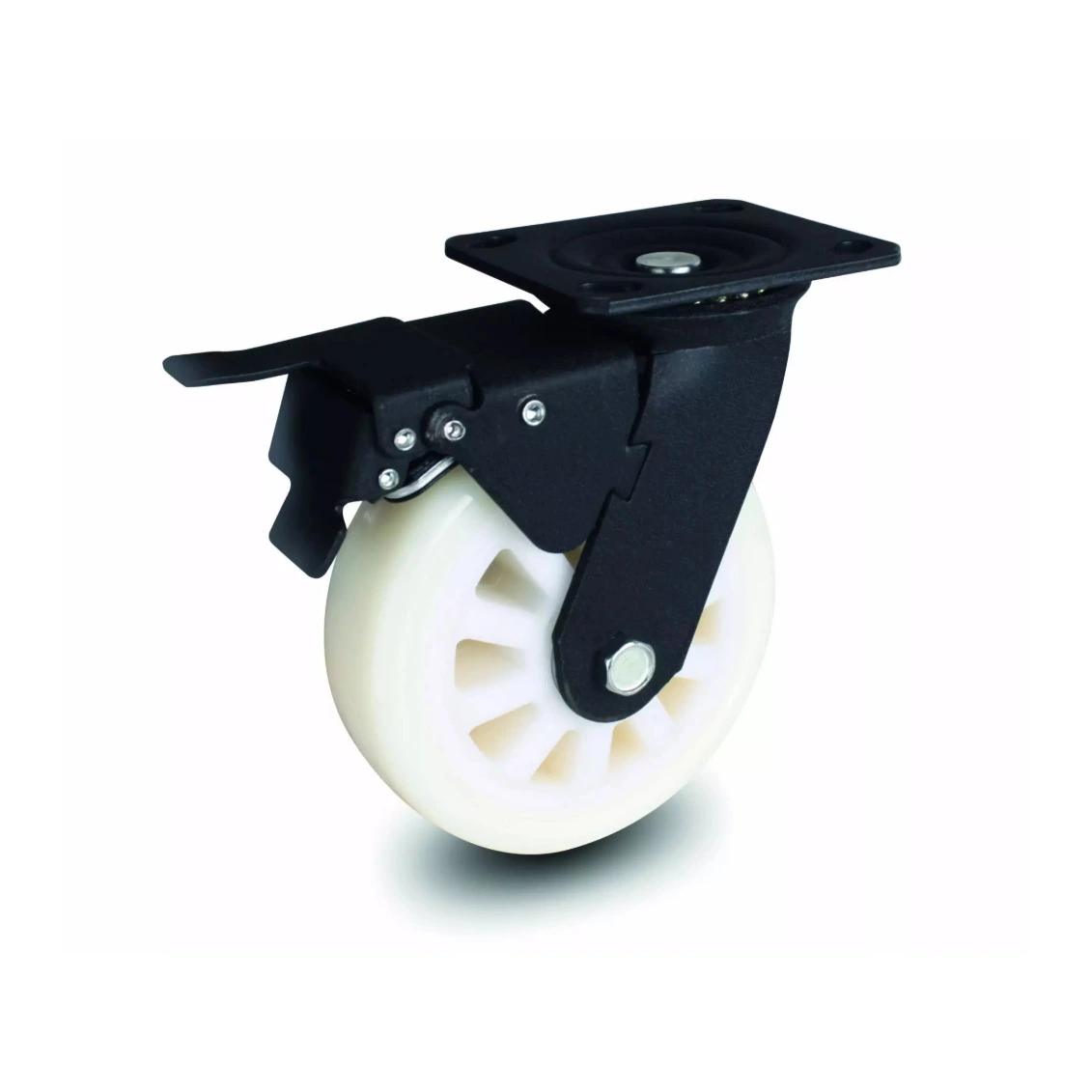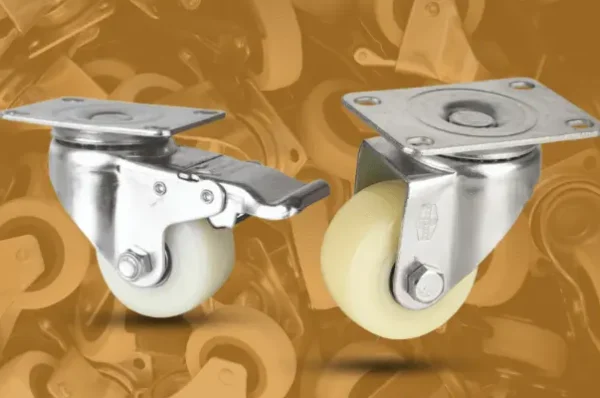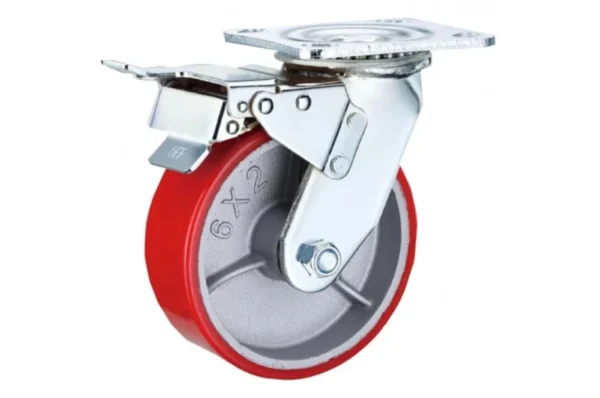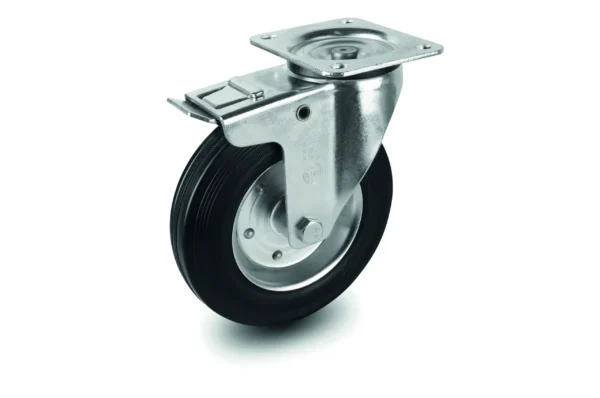Every industrial operation depends on one essential principle — movement. Without reliable mobility, even the most efficient systems face downtime, safety risks, and workflow interruptions. That’s where heavy-duty casters come in. These unassuming components play a critical role in transporting equipment, handling materials, and keeping production steady. Their design combines strength, precision, and control — all essential in demanding environments such as manufacturing, logistics, and warehousing.
At their core, heavy-duty casters are built to manage substantial loads while maintaining balance and maneuverability. They transform the movement of massive machinery or storage systems into a controlled and smooth process. What makes them truly indispensable is not just their load-bearing capacity, but their consistent reliability under continuous operation.
Engineering That Defines Strength
Behind every high-performing caster lies intelligent engineering. Heavy-duty casters are manufactured using robust materials such as forged steel, reinforced rubber, and precision ball bearings. These elements combine to ensure long-term durability and stability. The design of each part, from the mounting plate to the bearing assembly, distributes weight evenly and minimizes resistance.
In industrial environments, where carts and platforms endure daily mechanical stress, only precision-engineered designs can sustain performance. The pairing of heavy duty wheels and casters makes this possible. Together, they create motion that’s both smooth and secure — essential for maintaining workflow efficiency and worker safety.
Adapting to Demanding Workspaces
The UAE’s industrial landscape demands mobility solutions that withstand heat, pressure, and intensive workloads. From assembly lines to construction zones, heavy-duty casters are constantly put to the test. Their adaptability allows them to perform reliably on rough surfaces, uneven floors, and even outdoor terrains.
Modern caster systems are not one-size-fits-all. They tailor them to meet the diverse demands of specific operations. For example, heavy duty pneumatic casters are ideal for outdoor or uneven environments, providing shock absorption and noise reduction. They protect both the load and the operator by absorbing vibrations and ensuring stable motion — a key advantage in logistics and transportation.
Efficiency Beyond Strength
While strength defines their function, efficiency defines their value. Industrial mobility is not just about moving weight — it’s about doing it safely, consistently, and with minimal effort. Heavy-duty casters allow workers to transport heavy loads with less manual force, reducing strain and fatigue.
In industries where every minute counts, the reliability of heavy duty wheels and casters directly impacts productivity. Smooth rolling reduces friction and mechanical wear, extending the lifespan of both the casters and the equipment they support. This balance between endurance and efficiency is what makes them a long-term investment rather than a consumable component.
Design That Prioritizes Safety
Safety is not an optional benefit; it’s an engineering goal. Every heavy duty caster is designed with stability and control in mind. Features like swivel locks, precision bearings, and shock-absorbing tires contribute to predictable movement. When paired with braking mechanisms, such as in heavy duty pneumatic casters, they provide full stopping control even on inclined or rough surfaces.
The result is safer handling for operators and greater protection for transported goods. Reduced vibration, better load balance, and secure traction contribute to fewer workplace accidents and less equipment damage — key metrics for industrial performance.
Sustainability in Motion
The push for sustainable manufacturing extends to the smallest components. Engineers now design heavy-duty casters using recyclable materials, corrosion-resistant coatings, and energy-efficient production methods. This evolution not only reduces waste but also ensures that mobility solutions align with the environmental goals of modern industries.
Rubber compounds and steel alloys are now developed to offer both resilience and eco-efficiency. The result is a generation of caster systems that last longer, require less maintenance, and perform with minimal environmental impact.
Integration in Advanced Industrial Systems
As industries in the UAE advance toward automation and smart logistics, the role of heavy-duty casters continues to evolve. Automated guided vehicles (AGVs), robotic trolleys, and modular platforms now integrate them, each requiring precise movement and robust performance. Their adaptability makes them compatible with digital mobility systems that prioritize speed, accuracy, and reliability.
This evolution positions casters not merely as mechanical tools but as components of an intelligent movement system — a key enabler of industrial innovation and growth.
A Future Built on Reliable Mobility
Mobility remains the foundation of every productive industrial ecosystem. The ability to move heavy loads effortlessly defines how efficiently operations can perform. That’s why heavy-duty casters are at the heart of sustainable industrial design — combining durability, precision, and adaptability.
At Go Casters, the mission is simple: to engineer mobility solutions that deliver lasting performance in real-world conditions. Through rigorous testing, advanced materials, and thoughtful design, the company ensures that every wheel keeps industries moving forward — one smooth, stable motion at a time.




